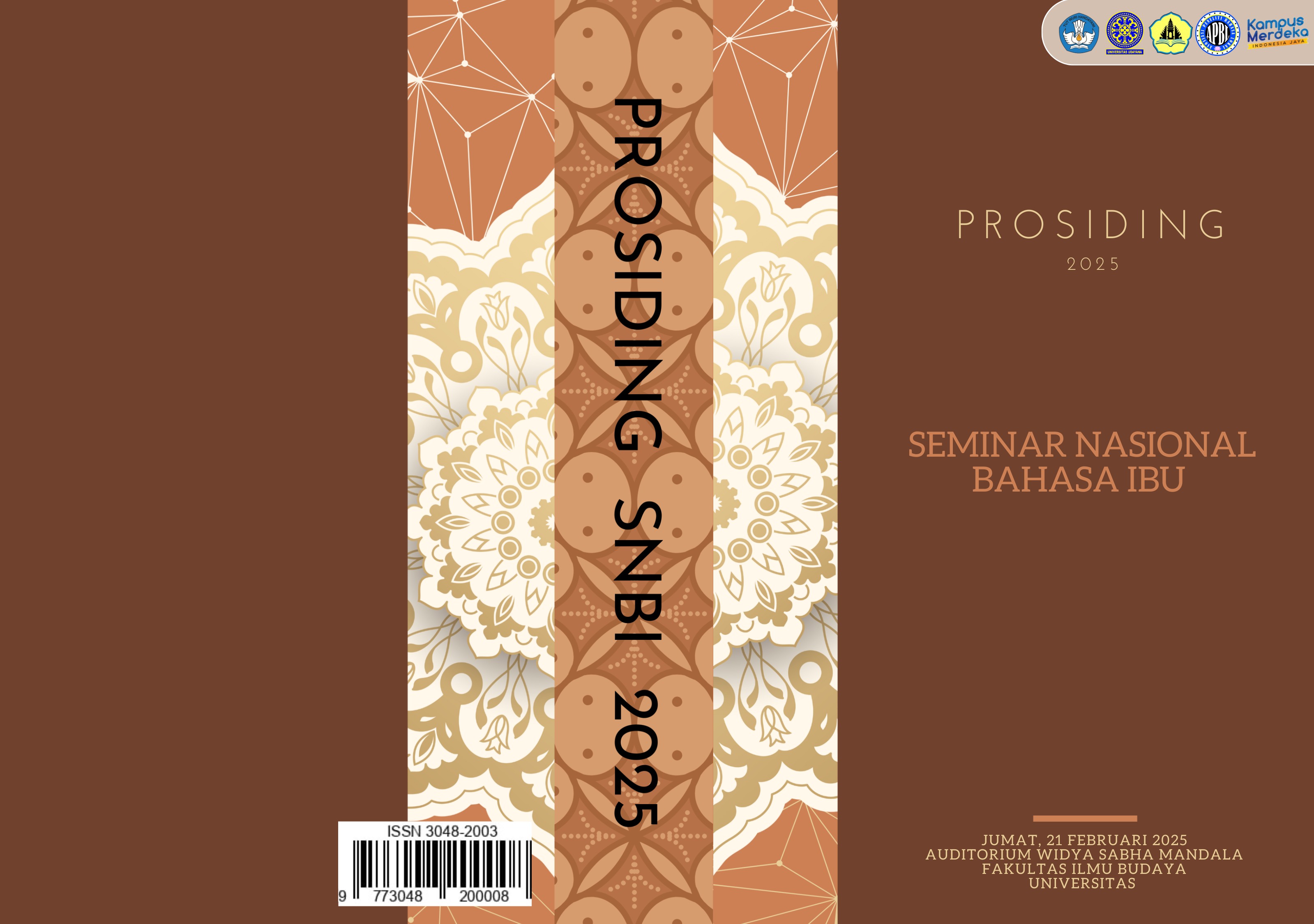PEMETAAN EMOSI POSITIF DAN NEGATIF DALAM TEKS TERJEMAHAN KIDUNG JAYENDRA DARI BAHASA INDONESIA KE BAHASA INGGRIS
Abstract
This research aims to analyze the mapping of meanings of positive and negative emotions that appear in Indonesian and their translations, and to determine the frequency of occurrence of both emotions. The data source consists of the text Kidung Jayendra by Mpu Yogiswara, taken from the book titled Lontar Kidung Gambang Gita Gegrantangan (Kawi – Indonesia – English) written by Rai S et al. (2009). The data is analyzed descriptively based on the scope of the research and presented informally. The analysis or discussion of the issues uses the translation procedure theory by Vinay and Darbelnet (in Venuti) and the Natural Semantic Metalanguage theory with paraphrasing techniques in formulating meaning explication by Wierzbicka. Related to the first issue, the analysis found a word-for-word translation technique that emphasizes meaning equivalence and adaptation. The most frequently used translation technique is literal translation or word-for-word translation. Like the translation of positive emotions such as "duhai juwitaku" into "dear my lover," "mabuk asmara" into "love drunk," "kesenangan" into "joy," "cinta" into "love," "memberanikan" into "encourage," "berharap" into "hope," "keindahan" into "beauty," "menikmati" into "witness," "kagum" into "astonished," "tersenyum" into "smile," "bersuka ria" into "happy," "kagum" into "amaze," and "setia" into "faithful." Meanwhile, in the translation of negative emotions, "duka lara" into "sorrow," "keluh kesah" into "anxious," "kecemasan" into "worries," "kesedihan" becomes "sadness," "geram" becomes "angry," "tidak suka" into "don’t like," "khawatir" into "worries," "tiada berdaya" into "helpless," "gelisah" into "restless," "remuk" into "crumpled," "rasa rindu" into "desire," "putus asa" into "desperate," "merayu" into "seduce," "membalas dendam" becomes "revenge," "kelelahan" into "tired," "kehabisan tenaga" into "out of energy," "keblinger" into "lost," "lesu" into "worn out," "berbahaya" into "dangerous," "bimbang" into "unrestful," "nafsu" into "lust," and "tidak peduli" into "don’t care." Meanwhile, the most frequently appearing positive emotions are the word "cinta" which appears 43 times, and the word "keindahan" which appears 18 times. Followed by negative emotions in the form of the word "tidak peduli" appearing 8 times, and the rest consist of 21 words appearing 1-2 times. This phenomenon arises because the translator is not a native speaker of the target language. Mapping has successfully simplified the concepts of positive and negative emotions into simpler and more easily understandable concepts.

 Dikelola oleh Program Magister dan Doktor Ilmu Linguistik Fakultas Ilmu Budaya Universitas Udayana
Dikelola oleh Program Magister dan Doktor Ilmu Linguistik Fakultas Ilmu Budaya Universitas Udayana
